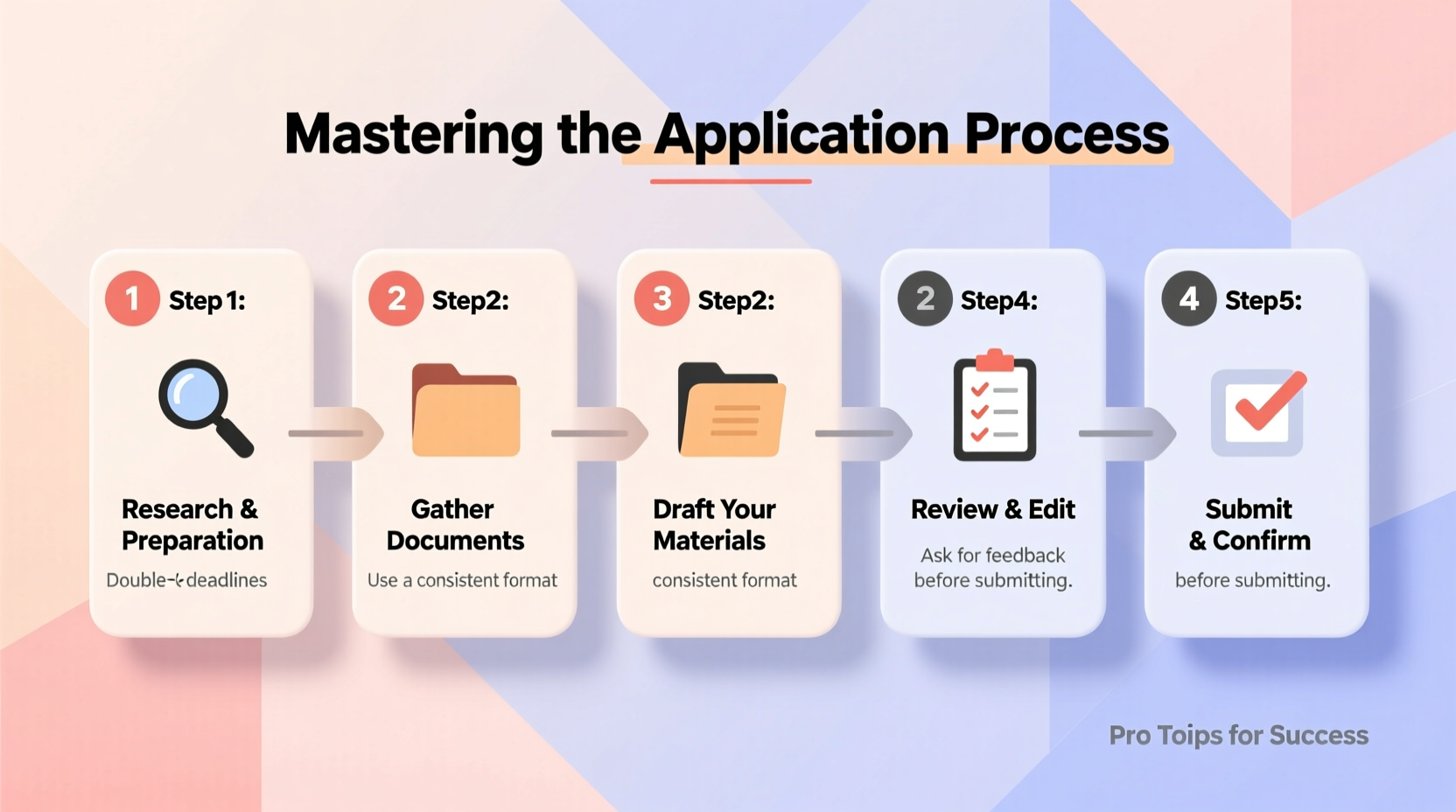Navigating the application process—whether for a job, academic program, grant, or professional certification—can feel overwhelming. A single oversight can derail an otherwise strong candidacy. Success doesn’t come from luck; it comes from preparation, attention to detail, and a strategic approach. By breaking down the process into manageable steps and following proven practices, you can significantly improve your chances of a favorable outcome.
Understand the Requirements Before You Begin

The foundation of any successful application is a clear understanding of what’s being asked. Rushing into writing without reviewing guidelines thoroughly leads to missed components, incorrect formatting, or irrelevant content. Start by gathering all official documentation: the application form, instructions, evaluation criteria, and deadlines.
Highlight key requirements such as word limits, required documents (transcripts, references, portfolios), and specific questions or prompts. Pay close attention to eligibility criteria—applying when you don’t meet core qualifications wastes time and damages credibility.
Build a Timeline for Submission
Procrastination is one of the biggest threats to a high-quality application. Even the most qualified candidates falter when they leave everything to the final days. Instead, design a realistic timeline that breaks the process into phases.
- Week 1–2: Review requirements, gather materials, identify recommenders, and outline responses.
- Week 3–4: Draft responses, request letters of recommendation, and complete forms.
- Week 5: Revise drafts, seek feedback, and finalize supporting documents.
- Week 6: Proofread, format, and submit at least 48 hours before the deadline.
Submitting early avoids technical issues like server outages or file upload errors that often spike near closing times.
Craft Compelling Responses with Purpose
Every written component of your application should serve a purpose: to demonstrate fit, showcase achievement, and convey motivation. Generic statements like “I’m passionate about this field” lack impact. Instead, use specific examples to illustrate your skills and experiences.
When answering essay or short-answer questions, follow a structured approach:
- Address the prompt directly in the opening sentence.
- Provide context with a brief background.
- Showcase actions you took and measurable outcomes.
- Reflect on learning or growth to add depth.
For instance, instead of saying, “I led a team project,” say, “As team leader, I coordinated weekly check-ins, delegated tasks based on strengths, and delivered the project two days ahead of schedule, improving client satisfaction scores by 30%.”
“Admissions committees aren’t just looking for excellence—they’re looking for clarity of purpose and evidence of impact.” — Dr. Linda Park, Director of Graduate Admissions, Northeast University
Avoid Common Pitfalls: Do’s and Don’ts
Even experienced applicants make preventable errors. The table below outlines frequent missteps and how to avoid them.
| Do’s | Don’ts |
|---|---|
| Tailor each application to the specific role or program. | Submit a generic resume or cover letter. |
| Proofread multiple times or use tools like Grammarly. | Submit with typos or inconsistent formatting. |
| Request recommendation letters at least 4 weeks in advance. | Ask at the last minute or fail to provide context. |
| Use active voice and concise language. | Overuse jargon or write vague, inflated statements. |
| Verify all links, attachments, and uploaded files work. | Assume the system will auto-save or accept large files. |
Real Example: From Rejection to Acceptance
Sophia applied to three graduate programs in public health. Her first round ended in rejection from all. Discouraged, she requested feedback and discovered her essays were well-written but lacked focus. One reviewer noted, “She lists accomplishments but doesn’t connect them to why she wants to pursue this degree.”
For her next attempt, Sophia revised her strategy. She mapped each program’s mission to her long-term goals, used data from her internship to show impact, and explained how a specific faculty member’s research aligned with her interests. She also submitted her application a week early after triple-checking uploads.
The result? Two acceptances, including her top choice, with partial funding. Her turnaround wasn’t due to new achievements—it was due to better presentation and alignment.
Essential Application Checklist
Before hitting submit, run through this comprehensive checklist to ensure nothing is overlooked:
- ✅ All required fields completed in the application form
- ✅ Resume/CV updated and tailored to the opportunity
- ✅ Personal statement or essays aligned with the prompt
- ✅ Transcripts and certificates attached in correct format
- ✅ Recommendation letters confirmed and uploaded
- ✅ Proofreading completed by at least one other person
- ✅ File names are professional (e.g., “LastName_CV.pdf”)
- ✅ Final submission tested on a different device or browser
Frequently Asked Questions
How detailed should my personal statement be?
Your personal statement should be concise yet illustrative. Focus on 2–3 key experiences that shaped your path, explain their relevance, and clearly state your future goals. Most statements range from 500 to 800 words—every sentence should earn its place.
What if I can’t get a recommendation from a supervisor?
If a direct supervisor isn’t available, choose someone who can speak confidently about your abilities—such as a colleague, client, professor, or project lead. What matters most is the quality of insight, not the title of the recommender.
Should I explain gaps in my resume?
If a gap exceeds three months and isn’t obvious (like parental leave or study abroad), briefly address it in your cover letter or additional information section. Be honest and frame it positively—e.g., “During this period, I completed a certification in data analysis and volunteered with a local nonprofit.”
Final Steps and Confidence in Submission
The moment before submission is critical. Log in to the portal, verify all sections are marked complete, and confirm receipt if possible. Some systems send automated confirmations; others require manual checks. Keep a copy of your entire application packet for your records.
After submitting, resist the urge to overanalyze. You’ve done the work thoughtfully and systematically. Whether the outcome is immediate acceptance, an interview invitation, or a waitlist notice, remember that a well-prepared application always strengthens your profile—even if success comes later.









 浙公网安备
33010002000092号
浙公网安备
33010002000092号 浙B2-20120091-4
浙B2-20120091-4
Comments
No comments yet. Why don't you start the discussion?